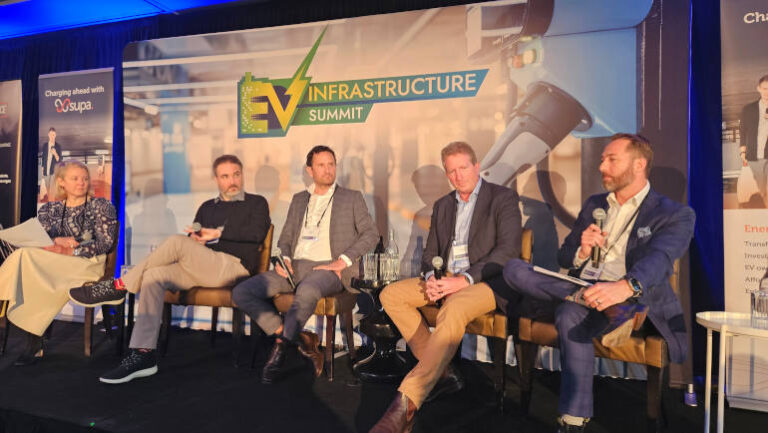The EV Infrastructure Summit in Sydney kicked off today with a sophisticated and technical conversation about the current state of electric vehicles and charging in Australia, and the future direction of the market, as it relates to residential and commercial buildings, owners and tenants.
Renae Gasmier, Head of Customer Assets for Energy Australia, began by highlighting the growth in EV sales, 8.5% of new car sales in 2023, and placing those vehicles, and the EVs to come to market, to be seen as batteries on wheels, and the vehicle fleet of Australia as an opportunity as “Australia’s biggest VPP (Virtual Power Plant)”.
She urged building managers and owners to consider the implications of EV integration on building ratings systems like Greenstar and Nathers, highlighting the need for energy orchestration where building systems support and interact with the broader grid.
Ross de Rango, of the Electric Vehicle Council followed, again sharing the growth in EV uptake, and sweeping electric buses and trucks into the pool of vehicles we need to consider with charging and EV infrastructure. He drew attention to the newly implemented NVES as a tool to increase the availability of quality electric vehicles in Australia, and the FBT exemptions as a tool to improve the affordability of EV through novated leasing.
Upcoming changes to the National Construction Codes, now in a public comment phase and due for impementaiton in 2025, provides for an increase in provision for charging, which is an improvement from the 2023 code requirement that buildings be “EV ready”.
Currently EV charging is often covered under ‘special hazard’ by builders, but Ross quoted Gary Rake, CEO of the Australian Building Construction Board, authors of the NCC, as saying that EV charging, common as it now is, should not have special hazard status applied to it.
In the case of buses and depot fleet charging, de Rango spoke of fleet refuelling currently carried out on site, drawing a rough equivalence between a 100L daily diesel requirement to a 300kW energy requirement, which could be distributed across midday and night time charging, when fleets are parked, but did note that network upgrades would likely be required in large fleet charging sites.
“Owners would need to consider the 30- 40 year investment in their electrical capacity,” said de Rango, “and the challenge for government to fuel the transition is to find a balance with landlord/ tenant incentives.”
With the discussion already full of EV puns, James Dunstan, Chief Strategy Officer of SUPA, charged into the discussion declaring there were “no U turns” on EV adoption for Australia, once more sharing the new sales rates of EV and this time highlighting the gap between EV adoption rates and the rates of install of AC and DC charging infrastructure to support that grown. There are currently three chargers for every 100 EVs in Australia, leading to drivers turning to unsafe and unreliable charging solutions.
Dunstan highlighted the challenges to strata when looking at EV charging, challenges that are just as relevant to fleet operators and managers. These include lack of access to capital for EV infrastructure, solution complexity, risk management, holistic building energy systems and ESG requirements driving change.
During a panel discussion Greg Schumann of Engie drew attention to the perceived fire risks of EV charging, noting that there was no evidence, in Australia or internationally, of an increased risk of fire when a vehicle was charging. In response, Jorge Chapa of the Green Building Council of Australia noted a lack of research papers and factsheets to back up this experience, which are necessary to inform policy in this area.
Energy load was discussed across the panel, with the assertion that EV transition will increase a buildings energy requirements by 20%, in addition to increased loads from other transitioning areas such as cooking and heating, and that the grid would need to accommodate and manage this increased demand from all buildings.
The challenges to EV transition are significant, but progress is being made, and solutions we need are already available. The integration of EVs into the urban landscape is not just about installing charging points; it’s about rethinking how energy is generated, managed and consumed across the board, and the property sector has a pivotal role in facilitating a greener future.






